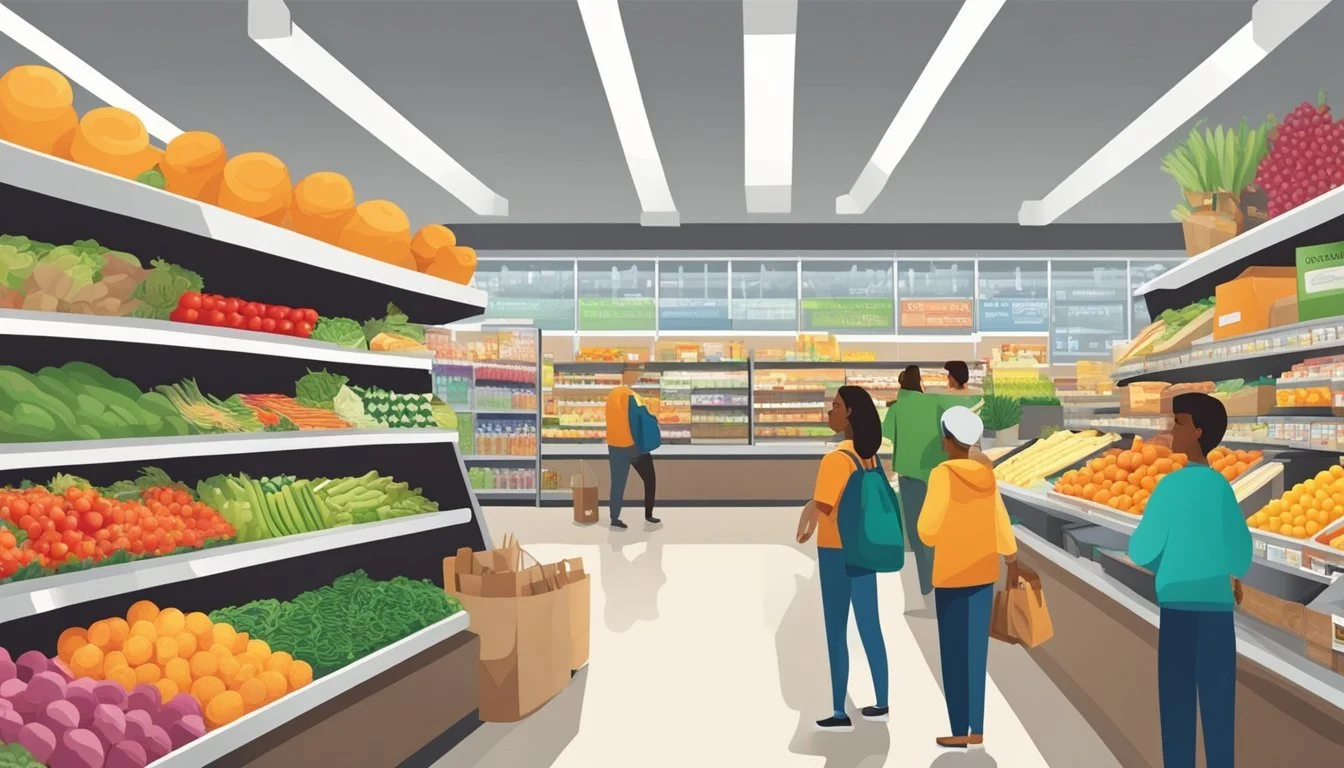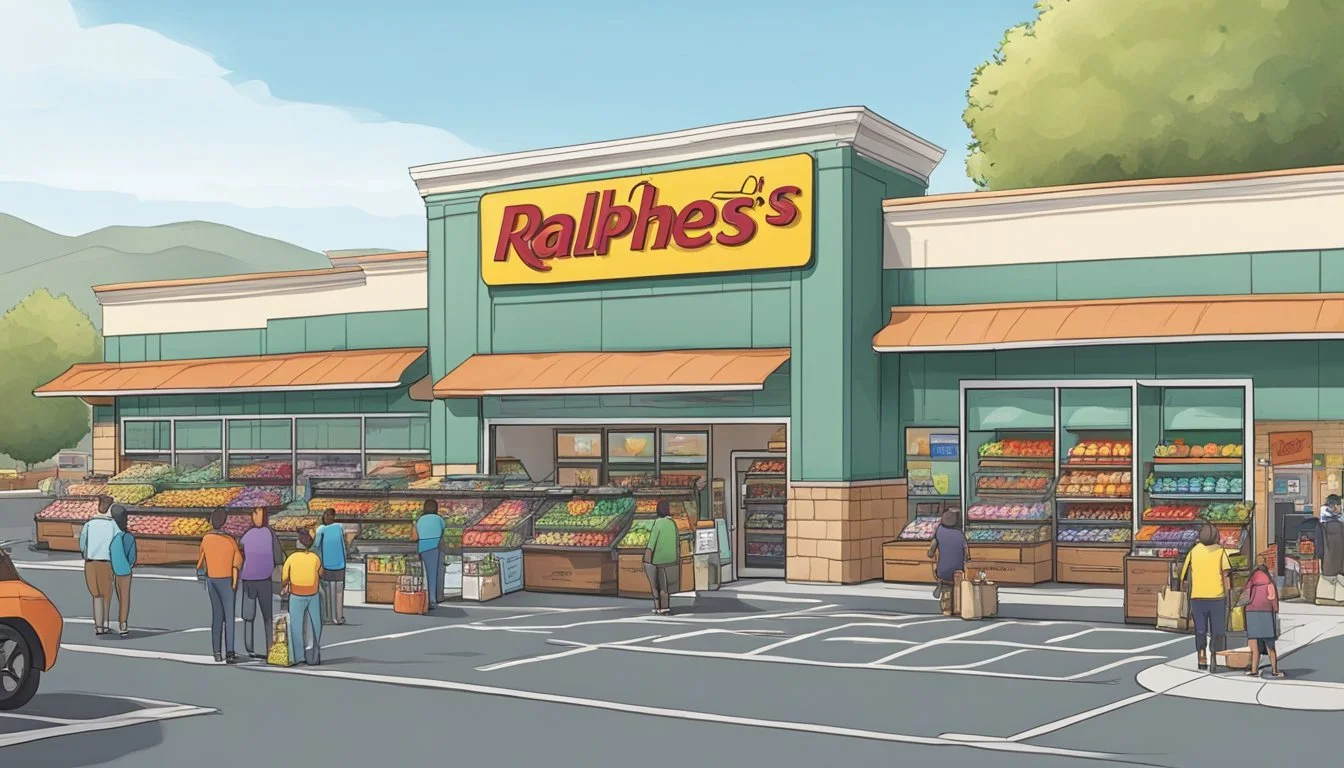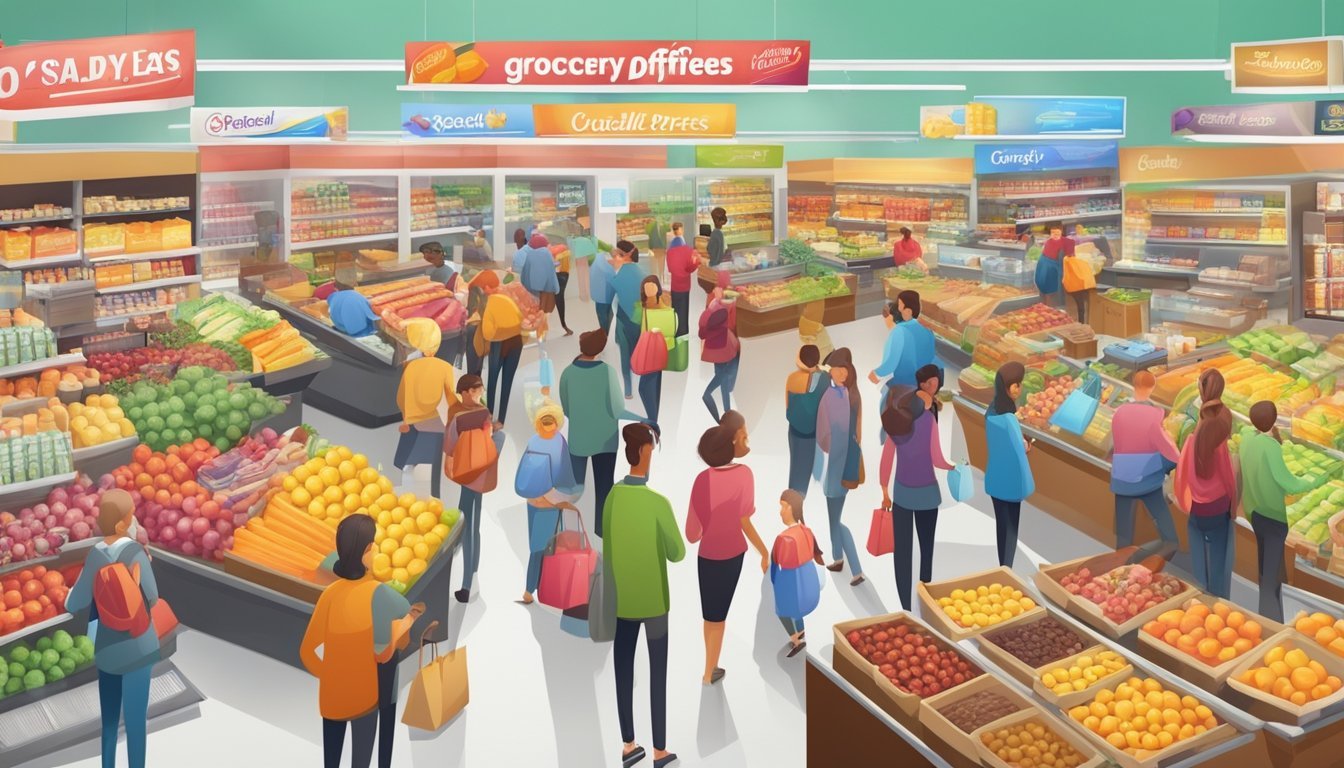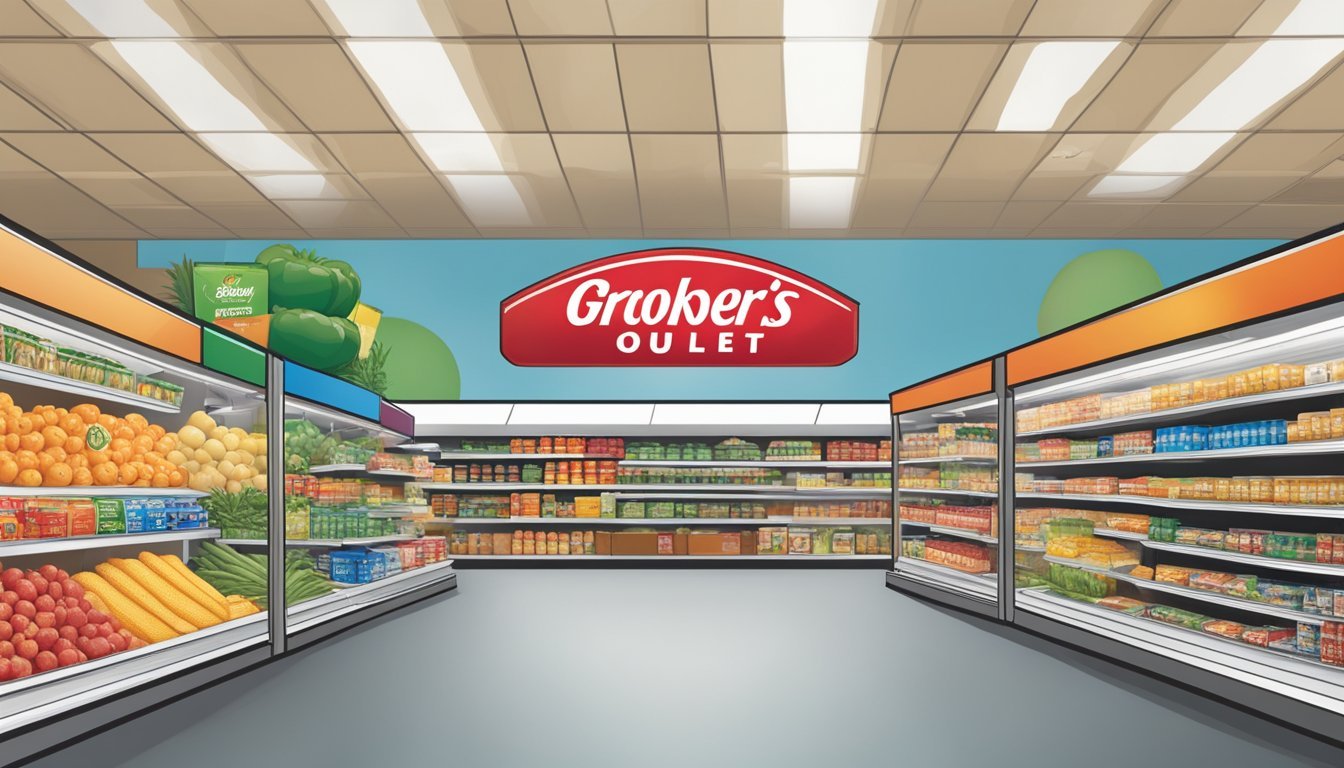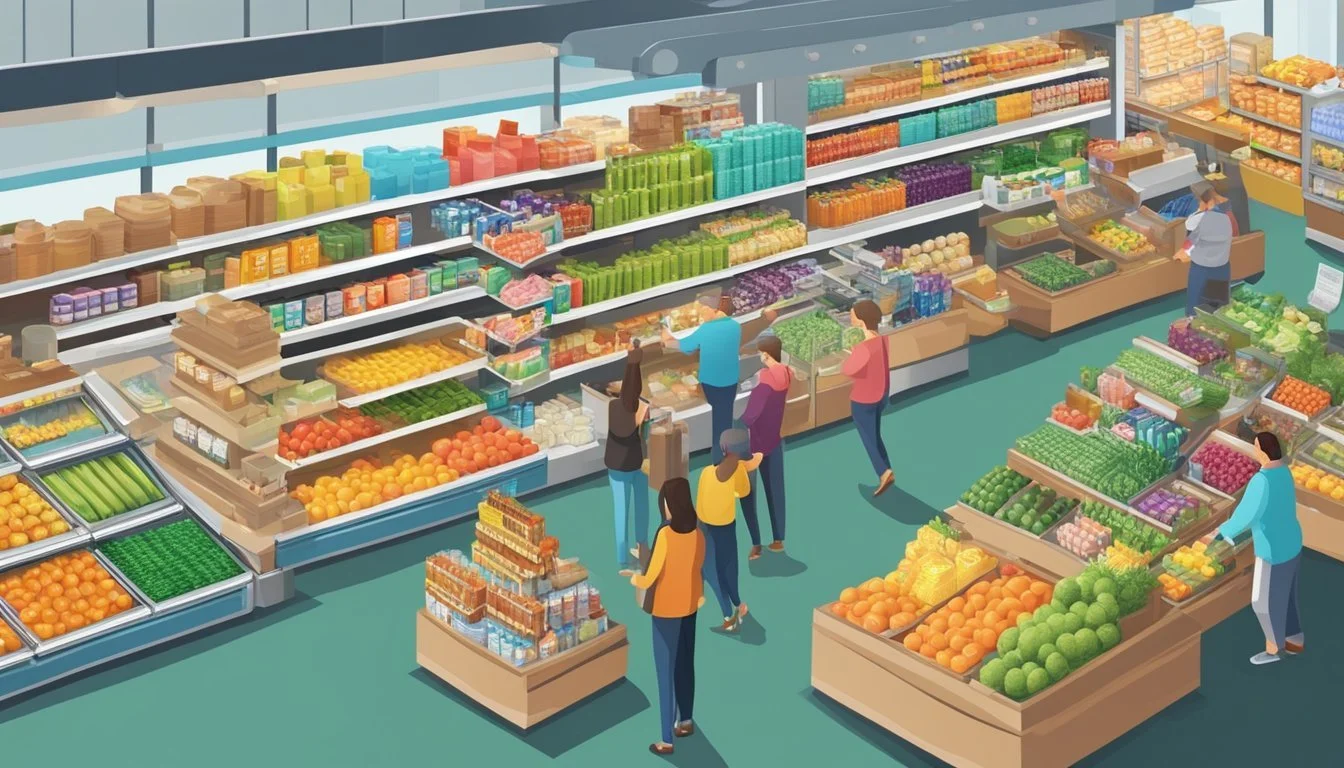Grocery Outlet vs Ralphs
A Comprehensive Comparison of Price and Quality
Grocery shopping can be a significant expense for many households. Comparing prices and quality between different stores is essential for budget-conscious consumers. Grocery Outlet and Ralphs are two popular options for shoppers in many areas, each with its own unique offerings and pricing strategies.
Grocery Outlet typically offers prices that are about 27 percent lower than the average grocery store, making it a top choice for bargain hunters. The store specializes in discounted surplus and overstock items from national brands, providing an ever-changing selection of products at steep discounts. Ralphs, on the other hand, is known for its consistent inventory and competitive pricing on everyday items.
Both stores aim to provide value to customers, but in different ways. Grocery Outlet focuses on deep discounts on a rotating selection of products, while Ralphs offers a more traditional grocery shopping experience with regular sales and promotions. The choice between the two often depends on individual shopping preferences and priorities.
Company Overviews
Grocery Outlet and Ralphs represent two distinct approaches to grocery retail. Both have unique histories and business models that shape their market positions and customer experiences.
Grocery Outlet History and Business Model
Grocery Outlet, founded in 1946, operates as a discount supermarket chain. The company's business model revolves around offering brand-name products at significantly reduced prices.
Grocery Outlet achieves this by purchasing surplus inventory and closeout merchandise from manufacturers. This allows them to sell items at 40-70% below conventional retail prices.
The chain uses an independent operator model, where local entrepreneurs run individual stores. This approach combines corporate support with localized management.
Grocery Outlet has expanded to over 400 locations across six states. Their stores are typically smaller than traditional supermarkets, focusing on a curated selection of discounted items.
Ralphs History and Position in Supermarket Chains
Ralphs, established in 1873, is one of the oldest supermarket chains in the United States. It began as a single grocery store in Los Angeles and has since grown into a major player in the California market.
In 1997, Ralphs became a subsidiary of Kroger, the largest supermarket chain in the country. This acquisition strengthened Ralphs' position and resources within the competitive grocery industry.
Ralphs operates full-service supermarkets offering a wide range of products. Their stores include fresh produce, meat, seafood, bakery items, and general merchandise.
The chain is known for its loyalty program, digital coupons, and in-store pharmacies. Ralphs has embraced technology, offering online ordering and delivery services to meet changing consumer preferences.
Geographical Footprint
Grocery Outlet and Ralphs have distinct geographical presences, with each chain focusing on different regions within California. Their store locations reflect their expansion strategies and target markets.
Grocery Outlet's Presence in California and Expansion
Grocery Outlet operates over 400 stores across eight states, with a significant presence in California. The chain has steadily expanded its footprint in the Golden State, particularly in Northern and Central California. Grocery Outlet stores can be found in major cities like San Francisco, Sacramento, and Fresno.
The company has also made inroads into Southern California, opening locations in Los Angeles County and Orange County. This expansion strategy aims to capture a larger share of the California market.
Grocery Outlet's growth includes both urban and suburban areas, often targeting neighborhoods underserved by traditional grocery chains.
Ralphs' Dominance in Southern California and Locations
Ralphs, a subsidiary of Kroger, maintains a strong presence in Southern California. The chain operates approximately 190 stores, primarily concentrated in Los Angeles, Orange, Riverside, San Bernardino, and San Diego counties.
Key Ralphs locations include:
Los Angeles: Multiple stores across the city
Long Beach: Several locations serving the coastal community
Anaheim: Stores catering to Orange County residents
San Diego: Multiple locations throughout the county
Ralphs' strategy focuses on maintaining its dominance in Southern California's competitive grocery market. The chain has invested in renovating existing stores and occasionally opening new locations to better serve its established customer base.
Price Comparison and Savings
Grocery Outlet and Ralphs offer different strategies for customer savings. Their pricing models and discount approaches impact overall grocery costs for shoppers.
Analyzing Everyday Low Prices and Discounts
Grocery Outlet specializes in selling overstock and closeout items at deeply discounted prices. This model allows them to offer significant savings on brand-name products, often 40-70% below conventional retail prices. Their inventory changes frequently, creating a "treasure hunt" shopping experience.
Ralphs, on the other hand, maintains more consistent pricing and relies on weekly sales and promotions. They offer digital coupons and a loyalty program that provides personalized discounts. Ralphs' everyday prices tend to be higher than Grocery Outlet's, but their sales can bring costs down considerably on select items each week.
Assessment of Loss Leaders and Store Brand Savings
Both stores use loss leaders - products priced at or below cost to attract customers. Grocery Outlet's entire business model revolves around this concept, with deeply discounted items throughout the store. Ralphs typically features a few key loss leaders each week, often on staple items like milk or eggs.
Store brands play a crucial role in savings at Ralphs. Their Kroger-owned private labels offer quality products at lower prices than national brands. Grocery Outlet carries fewer store brands but compensates with discounted name-brand items. Ralphs' store brands provide consistent savings, while Grocery Outlet's rotating inventory can yield bigger discounts on specific products when available.
Product Selection and Quality
Grocery Outlet and Ralphs offer distinct product selections and quality levels to cater to different customer needs. Their offerings vary in terms of variety, organic options, and freshness of perishables like produce and meats.
Variety and Availability of Grocery and Household Items
Ralphs provides a wide range of grocery and household items, including national brands and their own Private Selection line. Customers can find most everyday essentials consistently stocked on Ralphs' shelves.
Grocery Outlet, on the other hand, specializes in offering surplus and discounted items. Their inventory changes frequently, creating a "treasure hunt" shopping experience. While this can lead to exciting finds, it may not guarantee consistent availability of specific products.
Both stores carry pantry staples, cleaning supplies, and personal care items. Ralphs tends to have a more extensive selection of these products, while Grocery Outlet's offerings may be more limited but at lower prices.
Organic and Fresh Produce Options
Ralphs maintains a dedicated organic produce section with a variety of fruits and vegetables. They often source locally when possible, ensuring fresher options for customers.
Grocery Outlet's organic produce selection is more limited and varies by location and season. However, they frequently offer organic items at significantly discounted prices compared to other retailers.
Both stores stock conventional produce, with Ralphs generally providing a broader selection. Grocery Outlet's produce offerings may be more hit-or-miss, but can include unexpected deals on seasonal items.
Meat and Deli Quality Evaluation
Ralphs features a full-service meat and deli counter, offering fresh cuts, prepared meats, and cheese. They also stock pre-packaged options and often have specialty items available.
Grocery Outlet typically does not have a full-service counter but provides a selection of pre-packaged meats and deli items. The quality can be comparable to other stores, but the selection may be more limited.
Both stores carry various meat options, including beef, poultry, and pork. Ralphs tends to offer a wider range of cuts and grades, while Grocery Outlet may have more variable offerings based on available surplus stock.
Customer Shopping Experience
Grocery Outlet and Ralphs offer distinct shopping experiences, each with its own unique features. Their store layouts, checkout processes, and convenience services shape how customers interact with these grocery chains.
Store Layout and Shopping Environment
Grocery Outlet stores typically have a no-frills layout with a focus on discounted items. Aisles are often stocked with an ever-changing assortment of products, creating a "treasure hunt" atmosphere. This setup can be exciting for bargain hunters but may require more time to locate specific items.
Ralphs, on the other hand, maintains a more traditional supermarket layout. Products are consistently organized in designated sections, making it easier for shoppers to find what they need quickly. The stores often feature wider aisles and clearer signage, contributing to a more streamlined shopping experience.
Lighting and cleanliness vary between individual stores of both chains, but Ralphs generally maintains a more polished appearance.
Checkout Experience and Staff Friendliness
Grocery Outlet often operates with fewer checkout lanes, which can lead to longer wait times during peak hours. The staff, however, is typically knowledgeable about current deals and eager to assist customers in finding bargains.
Ralphs usually offers more checkout options, including self-service kiosks, which can speed up the process for customers with fewer items. The chain invests in customer service training, resulting in staff members who are generally helpful and courteous.
Both stores employ loyalty programs, but Ralphs' digital integration often provides a smoother checkout experience with personalized discounts applied automatically.
Convenience Services Offered
Grocery Outlet focuses primarily on in-store shopping, with limited additional services. Some locations offer basic conveniences like bottle return facilities.
Ralphs provides a broader range of services to enhance customer convenience. These often include:
Online ordering with pickup and delivery options
Pharmacy services in many locations
Fuel stations at select stores
Banking services through in-store ATMs
Ralphs also tends to have longer operating hours, catering to customers with varied schedules. While Grocery Outlet may offer fewer services, its focus on discounts can be a significant convenience for budget-conscious shoppers.
Special Offers and Loyalty Programs
Grocery Outlet and Ralphs employ various strategies to attract and retain customers through promotions and rewards programs. These initiatives can lead to significant savings for shoppers who take advantage of them.
Comparison of Promotions, Coupons, and Deals
Grocery Outlet focuses on offering deeply discounted products without the need for coupons. Their business model revolves around selling overstock and closeout items at steep markdowns. Shoppers can find savings of up to 40-70% off regular retail prices on many items.
Ralphs, on the other hand, provides a mix of weekly sales, digital coupons, and manufacturer coupons. They frequently run buy-one-get-one-free deals and multi-buy promotions. Ralphs' digital app allows customers to clip coupons and add them directly to their loyalty card for easy redemption at checkout.
Benefits of Loyalty Programs and Savings Cards
Ralphs offers a free loyalty program called Ralphs Rewards. Members earn fuel points on purchases, which can be redeemed for discounts at participating gas stations. The program also provides personalized digital coupons based on shopping habits.
Grocery Outlet does not have a traditional loyalty program. Instead, they rely on their everyday low prices and rotating inventory to keep customers coming back. Some Grocery Outlet locations may offer occasional specials or promotions, but these vary by store and are not part of a standardized program.
Ralphs' digital app enhances the shopping experience by allowing users to create shopping lists, view weekly ads, and track their rewards. This integrated approach can lead to additional savings for tech-savvy shoppers.
Brand Partnerships and Affiliations
Brand partnerships and corporate affiliations significantly impact grocery store operations and product offerings. These relationships shape pricing strategies, product selection, and overall shopping experiences for customers.
Ralphs and Kroger: Strategic Brand Synergy
Ralphs operates as a subsidiary of Kroger, one of America's largest supermarket chains. This partnership allows Ralphs to leverage Kroger's vast resources and purchasing power. Ralphs stores carry Kroger's popular store brands, including Simple Truth and Private Selection. These products offer customers high-quality alternatives at competitive prices.
The Kroger connection enables Ralphs to benefit from shared technology, supply chain efficiencies, and marketing initiatives. Customers can enjoy a wider variety of products and services, such as Kroger's loyalty program and digital coupons. This strategic alliance strengthens Ralphs' position in the competitive grocery market.
Grocery Outlet's Independent Operator Model
Grocery Outlet employs a unique independent operator model. Each store is run by local entrepreneurs who partner with the company. This approach allows for more personalized customer service and community engagement. Store operators have the flexibility to tailor their product selection to local preferences.
Unlike Ralphs, Grocery Outlet does not have exclusive ties to a single parent company. Instead, it sources products from various suppliers, including overstock and closeout items. This model enables Grocery Outlet to offer significant discounts on name-brand products. Customers can find unexpected deals and a constantly changing inventory.
Economic and Sustainability Practices
Grocery Outlet and Ralphs employ different strategies to balance affordability with environmental responsibility. Their approaches to eco-friendly measures and pricing models significantly impact both their economic viability and customer appeal.
Implementing Eco-Friendly and Sustainable Measures
Grocery Outlet focuses on reducing food waste by selling surplus and closeout items. This practice prevents edible food from ending up in landfills. The company also emphasizes energy-efficient lighting and refrigeration in its stores.
Ralphs, as part of the Kroger family, has implemented a Zero Hunger | Zero Waste plan. This initiative aims to eliminate food waste across their operations by 2025. Ralphs has also invested in solar panels for some locations and uses energy-efficient equipment to reduce its carbon footprint.
Both chains have introduced reusable bag programs and work to minimize packaging waste. Ralphs offers recycling stations for plastic bags and other materials in many stores.
Impact of Bulk-Buying and Private Labels on Affordability
Grocery Outlet's business model revolves around opportunistic buying, allowing them to offer steep discounts on brand-name products. This approach provides significant savings for budget-conscious shoppers. The company also stocks a range of private label items to offer additional value.
Ralphs leverages its parent company's purchasing power to negotiate better prices with suppliers. Their private label brands, such as Simple Truth and Private Selection, offer quality products at lower prices than national brands.
Both stores use bulk-buying strategies to reduce costs. Grocery Outlet often sells larger quantities of discounted items, while Ralphs offers multi-buy promotions and larger package sizes for popular products.
These strategies allow both chains to maintain competitive pricing while adapting to different customer preferences and shopping habits.
Analyst Insights and Future Outlook
Analysts provide valuable perspectives on grocery retail trends and company performance. Their insights shed light on market dynamics and potential future directions for Grocery Outlet and Ralphs.
Market Growth and Consumer Trends
Grocery retail is evolving rapidly. Consumers increasingly prioritize health and value. Organic and natural products continue gaining popularity.
Analysts note a growing demand for convenient shopping experiences. Online ordering and delivery services are expanding. Many shoppers seek a blend of digital and in-store options.
Value-conscious consumers drive growth for discount grocers. Grocery Outlet's opportunistic buying model caters to this trend. The company offers name-brand products at significant discounts.
Supermarkets face pressure to innovate. Ralphs and other traditional grocers invest in technology and store redesigns. They aim to enhance the shopping experience and operational efficiency.
Predictions for Grocery Outlet and Ralphs
Analysts project continued growth for Grocery Outlet. The average 12-month price target is $25.67, with estimates ranging from $21.00 to $31.00. Grocery Outlet's unique business model positions it well in the value segment.
Ralphs, as part of Kroger, benefits from scale and resources. The company's focus on data-driven decisions and personalization may drive future success. Analysts expect traditional supermarkets to leverage technology for improved efficiency.
Both retailers will likely invest in omnichannel capabilities. This includes enhancing online ordering, pickup, and delivery options. Grocery Outlet may expand its digital presence to compete with larger chains.
Price competition will remain intense. Ralphs often edges out competitors on everyday prices. Grocery Outlet's opportunistic model allows for deep discounts on select items.


